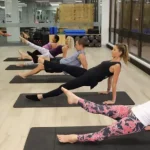If you are curious about which Pilates style suits your body, then learning about different types of Pilates explained by Polestar Pilates gives you clarity and confidence to choose the right one. In this article, we explore the main forms of Pilates, how each style works, and what benefits you can expect. Whether you are a beginner, recovering from injury, or a seasoned mover looking for variety, understanding the differences can make a strong difference in your fitness journey.
Also Read: How to Gather Instagram Content Ideas in the UK – 2025 Guide
What is Pilates, and why it matters
Pilates is a mindful movement method created to improve body awareness, core strength, and flexibility. It emphasises alignment, breathing, and controlled motion. Unlike high impact workouts, Pilates supports sustainable movement, safer joint function, and better posture. For many people in Australia, Pilates becomes a key part of their wellness routine because it bridges strength, mobility, and rehabilitation.
Pilates works the deeper stabiliser muscles around the spine and pelvis. This helps create a solid foundation for movement, reduces risk of injury, and improves everyday posture, whether you sit at a desk, carry children or do manual work. It is accessible to all levels but offers progression as you become stronger and more coordinated.
Classical Pilates
Classical Pilates follows the original exercises and sequence developed by Joseph H. Pilates in the early 20th century. The method uses mat work and apparatus such as reformers, cadillacs, barrels and chairs to work the body in an integrated way. It emphasises precision, control and full flow from one exercise to the next.
In a classical Pilates session you will often see familiar exercises like The Hundred, Roll Up and Spine Stretch. The instructor maintains strict form and placement of the body, with each movement flowing into the next. Many people appreciate this style for its clear structure and heritage.
Contemporary Pilates
Contemporary Pilates adapts the classical method to include modern knowledge of biomechanics, rehabilitation, and movement sciences. It retains the core Pilates principles while allowing more freedom in exercise selection and progression based on individual needs. Equipment may include reformers, spring-loaded chairs and bands, with variations to suit different goals.
With contemporary Pilates, you might add more dynamic exercises, use tools such as resistance bands or balls, and incorporate functional movement patterns that mimic everyday tasks or sport-specific moves. This makes it ideal for people who want the benefits of Pilates but also want to challenge themselves further.
Reformer Pilates
Reformer Pilates centres around the reformer machine—an apparatus with a sliding carriage, springs, and adjustable foot bar. This setup allows for resistive and assisted motion, making it highly effective for building strength, improving alignment and enhancing mobility.
Sessions using the reformer are often more challenging than mat work because you are working against resistance or receiving assistance in a controlled way. Reformer Pilates helps improve muscle tone, balance, and coordination. It is suitable for all levels, yet the settings can be adjusted to meet your starting point and progression pace.
Mat Pilates
Mat Pilates uses minimal equipment, relying on your body weight and often small props like bands or balls. It is accessible, portable, and can be done at home or in a studio. Mat sessions improve core stability, flexibilit,y and overall body control.
Because it uses your own body for resistance, mat Pilates builds functional strength in a subtle but effective way. It is a good entry point for beginners or a convenient addition for those with limited space or who travel often.
Clinical or Therapeutic Pilates
Therapeutic Pilates, sometimes called clinical Pilates, is guided by physiotherapists or instructors with rehabilitative training. It focuses on alignment issues, injury recovery or specific conditions such as back pain or post-surgical movement. The exercises may be slower, more controlled, and carefully tailored to an individual’s body rather than a group class.
This type of Pilates is ideal for people who need extra care and guidance or who may have movement restrictions due to past injury, chronic pain, or age-related changes. The focus is not only on exercise but also on restoring safe movement patterns and promoting long-term wellness.
Why choose Polestar Pilates’s approach
At Polestar Pilates, the emphasis is on comprehensive movement education, strong instructor trainin,g and evidence-based practice. Their programs draw from contemporary movement science while honouring the roots of Pilates. Polestar’s certified instructors guide individuals and groups through safe progression, clear form, and tailored goals.
Whether you are new to Pilates or experienced, Polestar offers the right style for you, aligning with your physical condition, lifestyle, and goals. Their studios provide clean, supportive environments where you are guided step-by-step and encouraged to progress without rushing. The result is improved functional movement, greater confidence, and lasting benefits for your body.
Choosing the right style for you
Deciding which type of Pilates fits you best depends on your goals, history, and preferences. If you are recovering from injury or need specialised guidance, then a clinical Pilates approach is wise. If you want a full body challenge and access to modern equipment,t then reformer or contemporary styles are suitable. If you prefer a self-paced workout or minimal equipment, then mat Pilates is a practical option.
Ask your instructor about class size, their training credentials, and how the session will be structured. Ensure the programme will meet your current fitness level and allow for progression. A tailored approach is far more effective than trying to fit into a generic class that may move too fast or too slow.
Tips to get the most from your Pilates practice
Here are a few simple tips to help you gain maximum benefit from your Pilates routine:
- Start with a good instruction to learn correct alignment and breathing patterns.
- Be consistent. A few sessions each week yield better results than sporadic visits.
- Communicate your goals or any past injuries or movement limitations to your instructor.
- Mix styles now and then. For example, try mat Pilates for flexibility and reformer for strength.
- Focus on progression not perfection. Your body will change over time and Pilates supports this evolution.
Conclusion
Understanding the different types of Pilates explained by Polestar Pilates empowers you to pick the style that fits your body, your goals and your lifestyle. Whether you choose mat, reformer, contemporary or therapeutic Pilates, the key is consistency, proper guidance and alignment with your personal journey.
Take the time to explore your options, attend a trial class and ask questions about how the session is structured. Once you find the right fit you’ll gain stronger movement, better posture and greater confidence. If you are ready to start or advance your Pilates journey, reach out to Polestar Pilates and begin an experience that truly supports your well-being.







